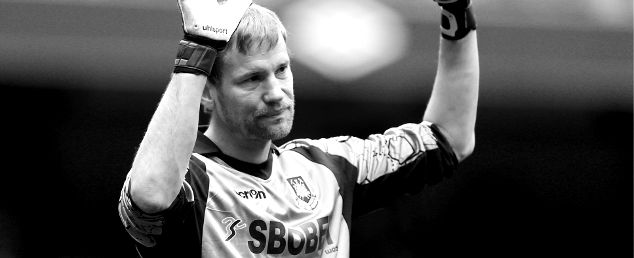Although we’re still a couple of months away from the start of the new season, Fantasy managers already have plenty to ponder after yesterday’s release of the 2013/14 Premier League fixture list. Tentative plans have been penciled in as we analyse the schedule in order to ascertain the most efficient, cheap rotation options on offer.
While we’re aware that most of our community are already familiar with such a concept – hats off to Yes The Sess, Portsmouth Bubblejet and our very own In Tommy We Trust for some incisive posts since yesterday’s fixtures were revealed – we begin our series of articles on fixture rotation with a look at the basics involved.
The Concept
Fixture rotation only applies to squad-based Fantasy games and is utilised best with goalkeepers and defenders. At its most basic level, the principle is simply finding a pair of cut-price players whose home and away matches dovetail perfectly, allowing us to select the home option each time and dropping the other player to the bench. Our rotation policies normally have us searching for budget pairings – mainly because most will baulk at the idea of benching an asset in or above the mid-price value bracket.
There’s also the degree of fixture difficulty to take into consideration, too. At times, this can be a little more subjective as not every Fantasy manager will agree on whether a home game with Chelsea, for example, is trickier than a trip to West Ham. For the record, the Blues scored 34 times on the road last season – the same number as the Hammers managed at Upton Park – while both sides failed to score in only two of those respective 19 fixtures.
Those playing starting XI games such as Sky Sports or The Sun need not worry about such strategies but for Fantasy Premier League (FPL) managers, fixture rotation can be a significant part of our preparation and one of the keys to success. Shuffling resources at the back and selecting cut-price regulars with guaranteed game time allows us to free up cash to invest further up the field.
The Security of Keepers
In some cases, geographical proximity plays a part in their ability to rotate. Arsenal/Tottenham and Man United/Man City, for example, alternate from one home game to the next but their goalkeeper assets are far from budget friendly – Joe Hart and David De Gea initially cost a combined 13.0 in FPL last term. Compare that to the preferred Jussi Jaaskelainen/Asmir Begovic option – which would have set you back a total of 9.0 for your intial lineup – and it’s clear that there’s value to be had between the sticks. Indeed, four of the top five players in terms of value in 2012/13 were keepers – Jaaskelainen, Mark Schwarzer, Simon Mignolet and Begovic, with Rickie Lambert the outfield outlier.
A fundamental reason for this is the FPL rule set. While clean sheets are the bread and butter of goalkeepers in most games, the FPL decision to award an extra point for every three saves is crucial to our thinking when assessing our options in goal. Last term, Jaaskelainen delivered just 11 clean sheets, for example, but earned an extra 39 points through saves alone to finish joint-second for stoppers. Handed an initial 4.5 price tag, the West Ham man’s price inflated to 5.2 in FPL and it was his consistency to deliver at least one save point or more in 26 of his 38 appearances which bolstered Jaaskelainen’s appeal.
Assured game time is another factor in goalkeepers’ favour. Four of the five players to feature in every minute of the 2012/13 season were stoppers – Jaaskelainen, Hart, Begovic and Mignolet – with Leighton Baines the only outfield player to make the cut. The risk of rest and rotation is significantly reduced, while the chances of a keeper being subbed off due to a tactical tweak are virtually non-existent.
The Case for the Defence
For every Jaaskelainen, though, there’s a Joey O’Brien. While Guy Demel became something of a cult hero around these parts last season, it was his fellow West Ham full-back who was the best value defender of 2012/13. With 32 starts under his belt, the former Bolton man racked up 123 points – just 21 points less than his keeper – despite playing 703 minutes fewer.
Initially costing 4.0 in FPL, O’Brien’s two goals, four assists and 11 bonus points highlight the potential of a cut-price defender; indeed, there’s every possibility he’d have outperformed Jaaskelainen if he’d been nailed-on at the start of last term, where he started just three of the first nine Gameweeks.
When forming our goalkeeper pairings, it’s vital to also consider what’s on offer from their respective defences. Take Southampton, for example. The Saints shipped 60 goals last season – only four sides conceded more – and their defensive options are resultantly expected to remain in the budget bracket. Bearing in mind they restricted their opponents to just nine goals in the final 10 Gameweeks of 2012/13, though, there’s a fair degree of optimism that Mauricio Pochettino’s side could be a viable investment this time round. While Artur Boruc is likely to offer us save point potential in goal, the Saints’ raiding full-backs Nathaniel Clyne and Luke Shaw look decent shouts from an offensive perspective – crucially, both also look nailed-on under the Argentine and may well share Boruc’s starting price.
While our 15 man FPL squads comprise of five defenders, the vast majority of Fantasy managers favour a three-man backline. Some prefer to plan a little more elaborately – utilising a variety of approaches including two, three and even four-way rotation in accordance with each team’s schedule. Initially, though, selecting the correct defensive options beyond a two-man rotation plan carries a degree of risk.
O’Brien’s three starts in the first nine Gameweeks is a perfect example and is one of a number of reasons why many prefer to be a little more cautious to begin with. Per Mertesacker – the second best value defender last year and sixth overall – started the season at just 5.0 after featuring in Arsenal’s first XI just 21 times the season before. Swansea’s Ben Davies, who began at 4.0, was propelled onto our radars only after first-choice Neil Taylor sustained a broken ankle in Gameweek 3. Seb Bassong – a 4.5 priced squad player at Spurs – was transferred to Norwich after the season got underway and thrived as a key component of Chris Hughton’s backline. Indeed, the Canaries defence produced 10 clean sheets last term compared to a measly three under Paul Lambert the campaign before.
Whether it’s a change of manager, a late move in the transfer window, an unfortunate injury to a first-team rival or a shift in the pecking order, then, all our best-laid plans can be quickly undone – there is always one or two budget defensive options that take us by surprise and emerge as favourites to disrupt our initial squads. An early wildcard, once first choice line-ups are clearer, may afford more security and lessen the likelihood of unnecessary mistakes for those intent on three or even four way rotation in defence.
Attacking Rotation
Typically, midfield or forward rotation is far trickier to achieve as we look to balance the books. The player list rarely affords us the option of a regular midfield starter under 5.0 in FPL – indeed, only three of last term’s top 30 started the campaign under 6.0: Shaun Maloney, Wayne Routledge and Jason Puncheon. Along with Liverpool’s Raheem Sterling, the latter had initially afforded as a rare double-up option in midfield and appealed to those utilising the 3-4-3 formation – both started at 4.5 but fell out of favour at their respective clubs as the season progressed, lessening out budget options further.
For those favouring a 3-5-2 formation, alternating two midfielders and a cheap third striker – picking two of the trio from one week to the next – is also an option. Last season, four sub 6.0 options found their way into the top 30 forwards; Jay Rodriguez, Andreas Weimann, Adam Le Fondre and Victor Anichebe, though the fact that none of the quartet began the season as first-choice at their respective clubs again highlights how tricky it is to judge how the Fantasy season will unfold.
Predicting attacking returns can prove far more frustrating and makes the idea of benching these assets a riskier tactic. Last term’s top value outfield player Rickie Lambert is a good example. Initially priced at 6.0, he registered 98 points on the road last season and 89 in front of his own fans – with goals or assists in 10 of his 19 road trips compared to eight from 19 appearances at St Mary’s, the Saints star man burned many a Fantasy manager who chose to omit him from their starting XI when faced with a tricky away trip. Those who benched Romelu Lukaku for West Brom’s Gameweek 35 visit to Southampton can also attest to the conundrum presented by the budget striker: the Belgian grabbed a 15-point haul in the 3-0 win, offering further proof that rotating a third striker with a fifth midfielder can be a thankless task. Even so, if you can get attacking rotation working for you, the funds liberated by two or three effective budget options can make the difference when it comes to heavy-hitter selection.
Indeed, as we look ahead to the 2013/14 season, many are already debating the Gareth Bale/Robin Van Persie conundrum. If, as many expect, the pair fetch a combined FPL price of around the 25.0 mark, scouring the market for budget rotation options looks more key than ever. While Van Persie’s consistency suggests he’s more than capable of overcoming United’s tricky first few fixtures, Tottenham’s strong opening schedule provides Bale the platform to run riot – with a possible double Gameweek for Chelsea also to factor in, there’s much for us to deliberate already. As the poll on the home page indicates so far, 52% are looking at acquiring both Bale and Van Persie, with just 7% prepared to overlook the Spurs man to begin with.
Using the Season Ticker
As most of you will have noticed, we implemented the brand new season tickers just a couple of hours after yesterday’s schedule announcement. The first six fixtures for all clubs are listed in the sidebar, though members can expand or restrict this by using the plus or minus buttons at the top right of the ticker. They can also view this in accordance with each team’s overall potential as well as by clean sheet and attacking prospects, sorting by difficulty as you go along.
Another of the useful features offered by the members version is the ability to drag and drop rows, moving teams up and down the ticker to help identify rotation pairings – already, there are some noticeable couples over the first few matches that appear to offer potential.
West Ham, Norwich and West Brom have all been handed strong home fixtures in Gameweeks 1, 3 and 5, while Southampton, Hull and, to a lesser extent, Everton offer similar potential in Gameweeks 2, 4 and 6.
Pairing up Sam Allardyce’s side with Southampton, for example, would give you a run of seven straight home games (CAR, SUN, STO, WHM, EVE, CPL, SWA) to kick off the season. A Norwich and Hull partnership would result in (EVE, NOR, SOT, CAR, AVL, WHM, AVL) for the first seven Gameweeks, while Everton and West Brom hands us (SOT, WBA, SWA, CHE/ful, SUN, NEW) in the opening six.
Obviously, these are just a trio of brief examples – as always, you can expect us to delve into the data in far more depth in our forthcoming articles.



11 years, 4 months ago10-0
Silva goal
Torres assist